Kristine Hughes's Blog, page 52
January 3, 2017
A TOUR GUIDE IN ENGLAND: SIGNS - PART 3
Published on January 03, 2017 23:30
December 30, 2016
CHATSWORTH HOUSE - THE MARBLES

The famous lion sculptures at Chatsworth were originally made for the Rezzonico Monument in St. Peters, Rome. In 1823 the sixth Duke of Devonshire commissioned the same lions for Chatsworth House. The the sleeping lion, above, was made by Rinaldo Rinaldi. The Crouching Lion was made by Francesco Benaglia.




In 1839 the 6th Duke of Devonshire acquired this colossal marble foot, and he recorded its provenance: "The great ancient Greek foot was sold to me by Carlo Finelli, the sculptor in Rome: it belonged to the Quirigi family at Lucca and was long in their palace."The foot is wearing an ancient form of a flip-flop and research has shown that this sandal is indicative of fashion in the 5th Century BC and was almost certainly worn by women. It is assumed therefore, that the feet were part of a colossal statue of a Greek goddess which may have stood approximately 11m high.


In May 1819 the 6th Duke of Devonshire, on his first trip to Rome, paid a visit to the studio of the most celebrated sculptor of the time, Antonio Canova. He marvelled at what he saw and commissioned a marble statue from Canova, leaving both its size and subject to the sculptor to decide, and paying a deposit in advance. The marble was roughed out by 1822, when Canova asked for a further £1,500. It was completed before his death later that year. It arrived in London the following year and caused a stir when first displayed at Devonshire House. The 6th Duke, who regarded it as his greatest sculptural treasure, also commissioned a large bronze copy of it from the sculptor Francis Chantrey, which can be seen on the South Lawn.





This colossal bust of the conqueror of Europe remained in Canova's bedroom in his Rome house until his death in 1822. Afterwards it was purchased by the 6th Duke of Devonshire's friend, Anne, Marchioness of Abercorn (d. 1827), who left it in her will to the Duke.The Duke considered that this bust was the only authentic one of Napoleon carved by Canova himself. It was made from his model for the colossal full-length nude statue of Napoleon as Mars the Peacemaker (1803 - 1806) commissioned, but later rejected, by Napoleon. The statue is now in Apsley House, the London home of the Duke of Wellington. The 6th Duke placed this bust in the centre of the Sculpture Gallery at Chatsworth, facing a bust of the great conqueror from Antiquity, Alexander the Great.

The 6th Duke of Devonshire visited sculptor Raffaelle Monti's studio in Milan, Italy, on 12th October 1846 on his way to Naples. He ordered the marble sculpture on 18th October, placing a £60 deposit on the following day. The sculpture was ready to be dispatched to England in April 1847, and the Duke appears to have displayed it in Chiswick House, west of London. It first came to Chatsworth in 1999 and was shown in the Sculpture Gallery where it appeared in the 2005 film 'Pride and Prejudice', starring Kiera Knightly and Matthew Macfadyen.

And spotted in the Chatsworth gift shop . . . . .

We will be seeing the Marbles above when we spend two days at Chatsworth House as part of Number One London Tours 2017 Country House Tour.
Full details regarding the Tour can be found here.
Published on December 30, 2016 23:00
December 28, 2016
A TOUR GUIDE IN ENGLAND: SIGNS - PART 2
Published on December 28, 2016 00:00
December 25, 2016
THE TWELVE DAYS OF CHRISTMAS
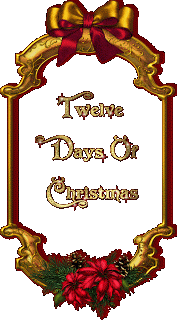
December 25th
My Own Heart - The London coach arrived today, bringing with it your gift of a partridge and a pear tree. You are too clever by half!
Yours For Eternity
December 26th
My Love - Two turtle doves! How simply smashing. I cannot wait to see you again that I might thank you personally. You are too droll.
For Ever and Ever
December 27th
Darling - There we were, my footman and I, dispensing bird seed when what should arrive at Blicking Hall but three French hens. You cannot imagine the look they brought to the footman's face. Truly, you shouldn't have.
Always
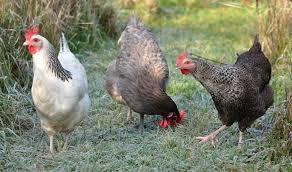
December 28th
Sweetheart - Four calling birds. How quaint. You should know that my lady's maid is making noises about leaving the Hall. The footman is none too happy, either, although the local carpenter is quite over the moon to have been hired to construct the aviary. Typically, work is scarce for him at this time of year.
Love
December 29th
Dearest - How could you do this to me? I do not mean to be short with you, but none of us here has gotten much sleep of late, what with all the billing, cooing, chirping and calling the birds are wont to do.
Yours
P.S. Thank you for the five golden rings.
December 30th
Dear - Now you've done it. Cook is quite put out by the six geese laying in her kitchen, and no wonder. You must end this. Accomplished cooks are difficult to come by in the country.
As Ever

December 31st
Dear Sir - I am most heartily sick of the sight of feathers. Your seven swans arrived today and are swimming in the ornamental fountain in the conservatory. Oldham has been snorting at me disdainfully all morning. Have you ever been snorted at by your butler? It's off putting, to say the least.
Happy New Year
January 1st
Sir - Is there a market for spare goose eggs? The eight maids you sent today are a welcome sight, what with all the seeds and feathers we have to sweep up hourly here. Once they have finished with that, the maids intend to walk to the village, where they are determined to help with the milking. Wherever shall they all sleep?
Please Cease and Desist

January 2nd
To Whom It May Concern - This daily gift giving business is no longer amusing. The entire village have followed the nine drummers drumming to our door. The staff are up in arms, save for the footman, who has not been seen since shortly after the eight maids arrived.
Stop it!
January 3rd
You black hearted scoundrel - the magistrate appeared at Blicking Hall today. It transpires that the villagers are being driven to distraction by the ten pipers and their constant piping. Perhaps you should have sent mimes.
January 4th
Could you not have sent the eleven ladies dancing to Almack's instead of to me? Do these outrageous gifts have anything to do with the betting book at White's? Is that idiot Brummell somehow involved? Have you a good receipt for fowl fricassee?
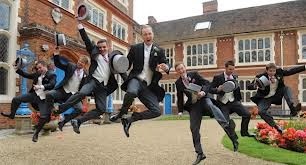
January 5th
My entire staff have deserted me, taking with them the maids, pipers, dancing ladies and, blessedly, the drummers. There is the tiniest bit of good news - I have been given to understand that some of them have made successful matches and are currently bound for Gretna Green. I was headed to my rooms with a bottle of port when who should arrive but twelve lords a leaping. And what lords they are - so handsome, so gallant, so utterly divine! How could I have doubted your intentions? Please give my regards to all in London, as I fear I shall be much too occupied here at Blicking Hall to partake of the Season.
Your Most Grateful Friend
Published on December 25, 2016 00:00
December 20, 2016
A TOUR GUIDE IN ENGLAND: SIGNS - PART 1
Published on December 20, 2016 23:30
December 17, 2016
THE SUPERSIZERS GO REGENCY
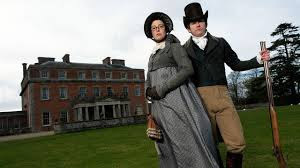
Sue Perkins (Great British Baking Show) and restaurant critic Giles Coren spend a week eating a diet that would have been familiar to the wealthy in Regency England. Using contemporary recipe books, our hosts sample everything from tea to jugged hare, potted venison, cheese on toast, sweetbreads (num!), trifle (original recipe, heavy on butter and cream), shrimp bisque, hare cake in jelly (nyet) brandy and claret punch, stuffed boars head (no thanks), pies and Wow Wow Sauce. Other subjects include Game Laws, port, the divide between rich and poor, the Corn Laws, the Duke of Wellington (yay!), the Prince Regent (boo!), gout, laudanum, Bath waters, Jane Austen, Italian ice creams (tea flavoured?!), battledore, the London marriage market, phaetons, cheese mites (yech!), the Beefsteak Club, 800 pound oxen (left overs!), cheese on toast (again), anti French songs, Dandies, corsets, Beau Brummell, cravats, sedan chairs, French cookery, spun sugar, testicles (no thanks), duels, Byron's tea with egg diet (blech), Harris's List (Huzzah!), Emma Hamilton, the Language of the Fan, gambling, sandwiches, debtor's prison, George IV's Coronation, the beauty recipes from the Mirror of Graces, the Royal Horse Artillery (yes, please!), dancing (good and bad), syllabub (never mind the calories), and the dangers of uric acid.
With special Guest Star Ian Kelly!
WARNING: Decidedly tongue in cheek!
Watch the full episode here.
Published on December 17, 2016 23:30
December 16, 2016
HAPPY 241st BIRTHDAY, JANE AUSTEN
HAPPY 241st BIRTHDAY, JANE AUSTEN
Here we are, almost entering the year 2017, two hundred years on July 18 since Jane Austen died at the terribly premature age of 41. Hard to believe the woman who wrote such celebrated literature lived only a smidgen above four decades. Her legacy will live forever.
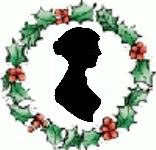
I am fortunate to attend two Jane Austen Society of North America Birthday events each year, one in Chicago and one in Milwaukee. Both are joyous occasions in beautiful venues with excellent programs, fine food, and rooms full of delightful companion Austen-lovers. Since JA's birthday falls in mid-December, we always celebrate amidst seasonal decorations adding to the festivities.
The Great Chicago Region held our Birthday Tea on Saturday, December 3, at The Fortnightly, just north of the Magnificent Mile.
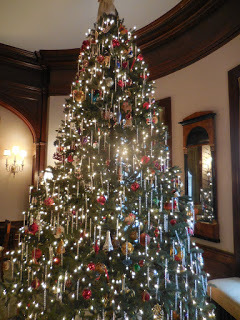 One of The Fortnightly's many Christmas trees.
One of The Fortnightly's many Christmas trees.
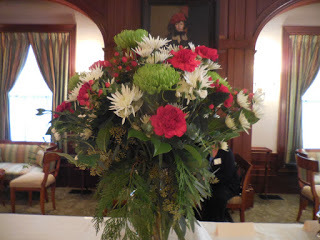
This year, Dr. Diane Capitani presented a talk on Emma and Motherhood, exploring the many aspects of maternal activity -- or lack of it -- in the last novel Austen published in her lifetime. As always, Dr. Capitani drew us deep into her subject with provocative interpretations inspiring lively discussion. Four leading characters in the novel are "motherless" - Emma, Frank Churchill, Jane Fairfax, and Harriet Smith. Other characters give us a variety of potential (or actual) maternal behavior: Emma herself in regard to her father, Miss Taylor/Mrs. Weston, and the deliciously offensive Mrs. Elton, for example. The resulting conversation was only stopped by the temptations of The Fortnightly's sumptuous tea.
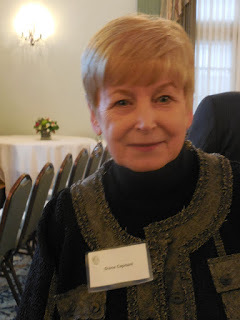 Diane Capitani
Diane Capitani
Dr. Capitani is a professor at the Garrett Theological Seminary of Northwestern University, and the Education Outreach Director of JASNA-GCR.
On Saturday, December 10, the Wisconsin Club in Milwaukee was the scene of JASNA-WI's Birthday luncheon. The bright sunlight outdoors almost stole the sparkle from their huge dining room tree.
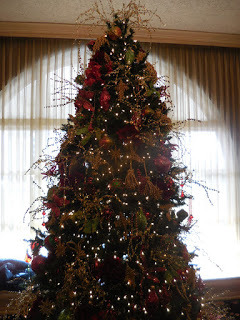
JASNA-WI Regional Coordinator Judith Beine (left) concluded her two terms as RC, turning the reins over to Kim Wilson (right) as the newly elected RC.
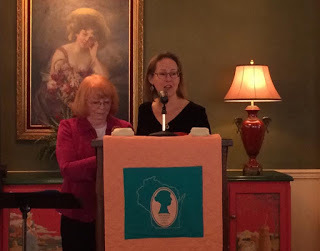
Following the delicious luncheon, we shared birthday cake, a timely reminder of the real source of our celebration.
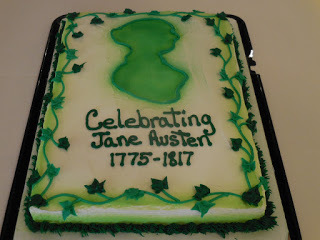
After quite a few years as JASNA-WI Recording Secretary, I was delighted to turn over my records to incomin RS, Sara Bowen, Thanks Sara! ANd many thanks also to Judy Beine for preesenting me with these charming reminders of Wellington's great victory in 1815's Battle of Waterloo: antique statues of Napoleon and his Josephine.
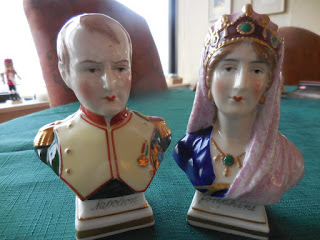
A large crowd enjoyed fellowship and the best of all events: a delightful presentation on Jane Austen's life and times.
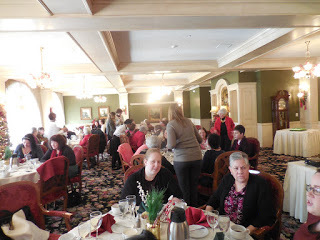
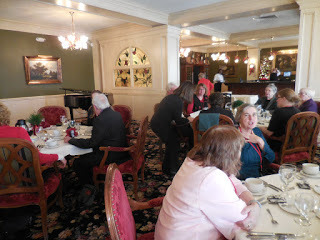
Speaker of the day was the always-popular Professor Jeffrey Nigro of the Art Institute of Chicago and Newberry Library, in addition to his recent terms as JASNA-GCR's Regional Coordinator and presently as the Program Director.
 Jeff Nigro
Jeff Nigro
Jeff presented Divas in the Drawing Room, or Italian Opera Comes to Highbury. The popularity of Italian Opera in the London Society of Jane Austen's era, augmented by the well-publicized competitions among the prima donnas, was reflected in Austen's Emma.
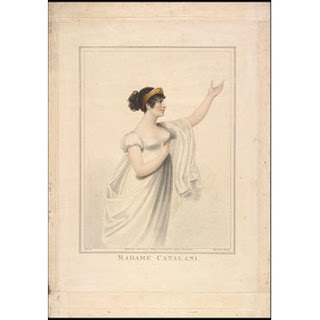 Madame Catalani
Madame Catalani
Emma admires the abilities of Jane Fairfax, her replacement as the leading performer in Highbury (it's prima donna?), but Emma is also very envious. Less important, but amusingly noted, are the continual claims of Mrs. Elton to performance excellence, even though she deftly deflects invitations to illustrate her ability. Including some soaringly-lovely examples of Italian vocal technique , this lecture brought everyone a new appreciation of Emma -- and of Jeffrey Nigro!
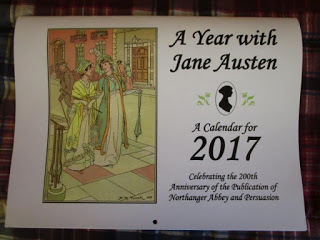
One reminder for the upcoming new year. You need to order your 2017 Jane Austen Calendar!Click here.
Here we are, almost entering the year 2017, two hundred years on July 18 since Jane Austen died at the terribly premature age of 41. Hard to believe the woman who wrote such celebrated literature lived only a smidgen above four decades. Her legacy will live forever.

I am fortunate to attend two Jane Austen Society of North America Birthday events each year, one in Chicago and one in Milwaukee. Both are joyous occasions in beautiful venues with excellent programs, fine food, and rooms full of delightful companion Austen-lovers. Since JA's birthday falls in mid-December, we always celebrate amidst seasonal decorations adding to the festivities.
The Great Chicago Region held our Birthday Tea on Saturday, December 3, at The Fortnightly, just north of the Magnificent Mile.
 One of The Fortnightly's many Christmas trees.
One of The Fortnightly's many Christmas trees.
This year, Dr. Diane Capitani presented a talk on Emma and Motherhood, exploring the many aspects of maternal activity -- or lack of it -- in the last novel Austen published in her lifetime. As always, Dr. Capitani drew us deep into her subject with provocative interpretations inspiring lively discussion. Four leading characters in the novel are "motherless" - Emma, Frank Churchill, Jane Fairfax, and Harriet Smith. Other characters give us a variety of potential (or actual) maternal behavior: Emma herself in regard to her father, Miss Taylor/Mrs. Weston, and the deliciously offensive Mrs. Elton, for example. The resulting conversation was only stopped by the temptations of The Fortnightly's sumptuous tea.
 Diane Capitani
Diane CapitaniDr. Capitani is a professor at the Garrett Theological Seminary of Northwestern University, and the Education Outreach Director of JASNA-GCR.
On Saturday, December 10, the Wisconsin Club in Milwaukee was the scene of JASNA-WI's Birthday luncheon. The bright sunlight outdoors almost stole the sparkle from their huge dining room tree.

JASNA-WI Regional Coordinator Judith Beine (left) concluded her two terms as RC, turning the reins over to Kim Wilson (right) as the newly elected RC.

Following the delicious luncheon, we shared birthday cake, a timely reminder of the real source of our celebration.

After quite a few years as JASNA-WI Recording Secretary, I was delighted to turn over my records to incomin RS, Sara Bowen, Thanks Sara! ANd many thanks also to Judy Beine for preesenting me with these charming reminders of Wellington's great victory in 1815's Battle of Waterloo: antique statues of Napoleon and his Josephine.

A large crowd enjoyed fellowship and the best of all events: a delightful presentation on Jane Austen's life and times.


Speaker of the day was the always-popular Professor Jeffrey Nigro of the Art Institute of Chicago and Newberry Library, in addition to his recent terms as JASNA-GCR's Regional Coordinator and presently as the Program Director.
 Jeff Nigro
Jeff NigroJeff presented Divas in the Drawing Room, or Italian Opera Comes to Highbury. The popularity of Italian Opera in the London Society of Jane Austen's era, augmented by the well-publicized competitions among the prima donnas, was reflected in Austen's Emma.
 Madame Catalani
Madame CatalaniEmma admires the abilities of Jane Fairfax, her replacement as the leading performer in Highbury (it's prima donna?), but Emma is also very envious. Less important, but amusingly noted, are the continual claims of Mrs. Elton to performance excellence, even though she deftly deflects invitations to illustrate her ability. Including some soaringly-lovely examples of Italian vocal technique , this lecture brought everyone a new appreciation of Emma -- and of Jeffrey Nigro!

One reminder for the upcoming new year. You need to order your 2017 Jane Austen Calendar!Click here.
Published on December 16, 2016 00:00
December 13, 2016
BEHIND THE SCENES OF THE CROWN

A few months ago, my pal Denise Costello led me to a fabulous blog called Cote de Texas, a lifestyle, decorating, design and all around wonderful site. Recently, Joni Webb, who writes and edits Cote de Texas, ran a really in-depth, well researched and visually stunning post on the sets used during the filming of The Crown, the Netflix series centered on Queen Elizabeth and the royal family that reached a staggering $100 million to produce, chiefly due to the fact that the production team were determined that the sets, costumes, jewels, cars and everything else connected with filming be historically correct.
For her recent post, Joni uncovers which historic locations stood in for Buckingham Palace and Clarence house, she looks into the attention to detail that is the hallmark of The Crown and also offers up some most amusing nuggets of behind-the-scenes on-dit.

Click here to read Behind the Sets of The Crown, which appears to be just the first in a series of posts about The Crown, so don't forget to follow the site while you're there!
Published on December 13, 2016 23:00
December 10, 2016
WINDSOR'S "CROOKED HOUSE" NOW THE JERSEY PEARL
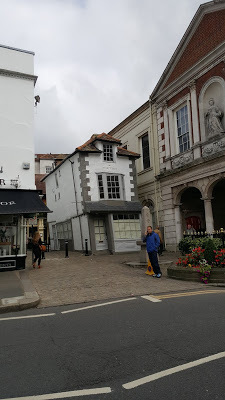
Windsor is one of my favourite places in England. It offers so much variety in things to see and do and the entire town is extremely walkable. I try to visit Windsor every time I'm over, as I did with Sue Ellen Welfonder a few months back. Of course, you can't miss the Crooked House, a mainstay of the Windsor High Street for centuries. It was built in 1592 and originally known as Market Cross House, standing cheek by jowl with the Guildhall. It didn't start to tilt until 1718, when renovations were carried out using green, unseasoned wood. I've personally seen it transform from one type of business to another several times, the latest tranistion being from gift shop to tea rooms. This time I visited, it was again being transformed, but the only clue we had to it's future use was some gilt writing on the facade stating "Jersey Pearl."
Soon after I returned home, someone mentioned the Crooked House in a Facebook post and a discussion was started regarding the House and it's future purpose. Recently, I received an email from Windsor regarding exactly what the "Jersey Pearl" is and I share that news with you here.
Mystery solved!
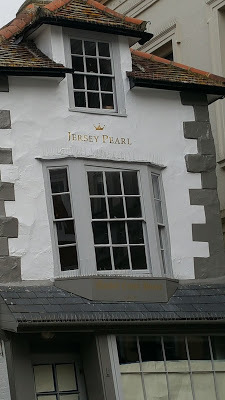

Windsor’s famous Crooked House is now the home of Jersey Pearl – and it’s a great place to visit.
Located in the heart of historic Windsor, Crooked House is one of the town’s most photographed buildings, instantly recognisable for its jaunty lean. But now, there’s a whole lot more to do and see inside – in fact, this amazing boutique is tipped as one of Windsor’s most enjoyable experiences.There’s a huge range of exquisite pearl jewellery to suit all tastes and budgets. From classic necklaces to fun, contemporary and colourful ways to wear pearls, there’s plenty to explore and new looks to try.For fans of royal history there are plenty of surprises. Fancy trying on a replica of Queen Elizabeth I’s necklace of 600 pearls? Or see what Queen Elizabeth II’s favourite pearl strands look like on? Come along and take a photo wearing them and then delight your friends with your new, royal look!And while you’re at it, you can enjoy a spot of Christmas shopping; in fact, if you bring this newsletter to our boutique, you’ll receive £10 off your first purchase.For more information, contact Debbie and the team in Windsor store.email: windsor@jerseypearl.co.ukTel: 01753 868969www.jerseypearl.com
Published on December 10, 2016 23:30
December 7, 2016
ONCE AGAIN WEDNESDAY: FASHIONS FOR 1815
Victoria here sharing a few of my fashion plates from magazines of 1815. At one time, I owned most of the 1815 and 1816 La Belle Assemblee volumes and plates, now residing in the Chawton House Library. I have kept digital and printed copies for my own use, but they will reach a better audience there. I still have a few from Ackermann's, so herewith :
What you'd be Wearing 200 years ago!
 La Belle Assemblée, February, 1815
La Belle Assemblée, February, 1815
From the magazine: "Parisian Costume: A short round dress of the finest light ruby Merino cloth, trimmed with narrow blue velvet, is worn over a cambric petticoat, no part of which is seen by the double flounce of the finest Valenciennes edging with which it is ornamented at the bottom. We refer our readers to the Print for the form of this dress. An elegant little cap of black velvet is put on over one of white lace, the lace border is disposed round the face in a very novel and becoming style. The hair is little seen on the forehead, and not at all on the neck, otherwise the fullness of lace would look much better; the cap is ornamented with a beautiful plume of white ostrich feathers, put on so as to fall over in front. White silk scarf with a border of intermingled blue and ruby. Black kid slippers, tied round the ancle (sic.) with a narrow black ribband; and white kid gloves. We have selected this dress because it is at present in the highest estimation amongst the Parisian elegantes; it is certainly original, and the materials are elegant, the scarf, in particular, is superb; its tout ensemble is truly French, and the admirers of Parisian fashions will, we think, agree with us, as to its being one of the most striking lately introduced in that tasteful metropolis. The dinner dress was invented by Mrs. Bell, Inventress of the Ladies Chapeau Bras and the Circassian Corsets, and of whom only it can be had, at her Magazin des Modes, No. 26, Charlotte-street, Bedford-square; of who also May be had the Parisian Costume as above described.
 Ackermann's, March 1815
Ackermann's, March 1815
This looks like just the ensemble for the chilly winds of March. But that hat would need a strong set of pins to keep it on her head.
Description from the magazine: "Walking Dress: Pelisse of short walking length, made of evening-primrose coloured velvet, ornamented down the front with satin trimming, round capes, trimmed to correspond, full lace ruff. A French bonnet, composed of white velvet and satin in reversed plaitings, trimmed round the edge with a quilting of lace, full plume of ostrich feathers in the front. Half-boots of tan-coloured kid. Gloves, Limerick or York tan."
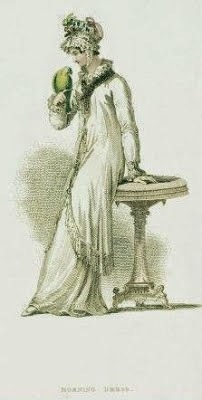 Ackermann's, April 1815
Ackermann's, April 1815
I love the parrot or budgie on her hand.
"Morning Dress: A loose robe of fine cambric or worked jaconot muslin, over a petticoat of the same, flounced with French trimming; long, full sleeve, confined at the wrist with treble drawings, and ornamented with corresponding trimming. The robe or neglige of demi-length, is confined at the top by a narrow collar or gathered into a Vandyke ruff, and is worn with coloured silk handkerchief, tied carelessly round the neck, and is fastened down the front with bows and tassels. A mob cap, composed of net and Brussels lace, decorated with a cluster of flowers, and bows of satin ribbon. Hair curled in the neck. Slippers or sandals of pale tan-coloured kid. Gloves en suite."
 La Belle Assemblée, May, 1815
La Belle Assemblée, May, 1815
Originally published March, 2015
Angouleme Walking Dress
Angouleme is an area of southwestern France. In 1799, the Duke of Angouleme married Marie Thérèse 1778-1851), eldest child of King Louis XVI of France and Queen Marie Antoinette. The Duke was the son of the eventual French King Charles X, who abdicated in 1830. As the niece of Louis XVIII. the Duchess was part of his entourage when he became King in 1814, and she accompanied him when he fled at Napoleon's return to Paris. Since I cannot locate the magazine's description of this plate, alas, I assume the ensemble is named for the Duchess in some regard.
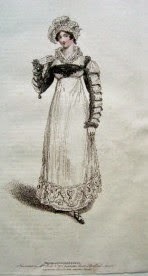 La Belle Assemblée July 1815
La Belle Assemblée July 1815
Waterloo Walking Dress: After the Battle, the publishers of this magazine must have raced to find a suitable dress to commemorate the battle, something in the colors of mourning for the dead, yet expressive of the victorious celebration throughout the nation. Do you think they succeeded?
From the magazine: "Waterloo Walking DressThis very beautiful dress, which answers the double purpose of walking or dinner dress, is composed of clear muslin and is made in a most original and tasteful style: the petticoat, as our readers will perceive by the Print, is ornamented in an elegant and appropriate manner with a tasteful black trimming. The body and sleeves, composed of an intermixture of black satin and clear muslin, are exquisitely fancied; they are made in a style of novelty, elegance, and simplicity which we never recollect being equalled in the mourning costume. The Waterloo dress, when worn for dinner parties, has no shirt, but some ladies shade the neck a little by a narrow frill of white crape round the bosom. In the walking costume it is worn with a shirt invented for the occasion, and trimmed in a very novel and appropriate style. Of the hat worn with this dress we can only observe that it is the most elegant and striking headdress ever invented for mourning; it is an intermixture of white satin and black crape, most tastefully ornamented with either black or white feathers. Black or white kid sandals and white kid gloves finish the dress, the effect of which altogether is much more elegant than our fair readers can conceive either from the Print or from our description. The above dress was invented by Mrs. Bell, Inventress of the Ladies Chapeau Bras and the Circassian Corset, and of whom only they can be had, at her Magazin des Modes, No. 26, Charlotte Street, Bedford-Square."
 La Belle Assemblée August 1815
La Belle Assemblée August 1815
The description below is particularly amusing, referring to ease of shedding the dress while in the bathing machine (see background drawing) ready to be 'plunged.'
“Sea Side Bathing Dress: This very elegant dress is composed of the newly introduced Berlin silk. It is made in the form of a pelisse, and is so contrived that the stays, petticoat, and pelisse are all put on in a few moments. A flounce of green gauze, crape, or muslin, edged with an exceedingly pretty silk trimming, ornaments the dress; which, when on, is so finished and elegant that no one could suppose it was possible to adjust it in a few moments. A Leghorn hat ornamented with a plume of straw colour feathers, and green plaid leather boots, finish this dress, which we look upon as a chef d’oeuvre in its way, since, independent of the advantage which it is to a lady to be able to dress and undress so quickly, the most fastidious belle must confess that nothing can possibly be more becoming than this Sea Side Bathing Dress. The Wellington corset, with which it is worn, is admirably adapted to display in the most easy and graceful manner the natural proportions of the shape; and the tout ensemble of this elegant and useful habit is simple, tasteful and in the highest degree appropriate.”
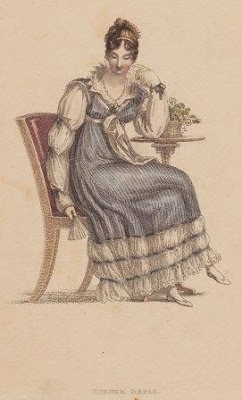 Ackermann's, September 1815
Ackermann's, September 1815
"Dinner Dress: A white satin slip worn under a dress made in primrose-coloured French gauze, terminating at the feet with a full flounce of blond lace, headed with a double border of the same, gathered in full, and confined with folds of satin, corresponding colours to the dress; handkerchief -front trimmed with white satin, and a falling collar of blond lace; long sleeve of white satin, the fulness upon the shoulder confined under an epaulet of the French gauze tried with white satin; the sleeve drawn alternately across the arm with the evening primrose coloured satin ribbon. Long white sash of white satin, tied in front. The ends of the hind hair brought forward, to fall in ringlets over the temple, confined with a plain white satin ribbon, and ornamented with a tiara of pearl. Necklace to correspond. Gloves, French kid. Slippers, white satin."
Want more of 1815? We'd love to have you join us on Number One London's 1815: London to Waterloo Tour, when we'll be exploring this exciting year in-depth. Full details on our website, at the link above.
What you'd be Wearing 200 years ago!
 La Belle Assemblée, February, 1815
La Belle Assemblée, February, 1815From the magazine: "Parisian Costume: A short round dress of the finest light ruby Merino cloth, trimmed with narrow blue velvet, is worn over a cambric petticoat, no part of which is seen by the double flounce of the finest Valenciennes edging with which it is ornamented at the bottom. We refer our readers to the Print for the form of this dress. An elegant little cap of black velvet is put on over one of white lace, the lace border is disposed round the face in a very novel and becoming style. The hair is little seen on the forehead, and not at all on the neck, otherwise the fullness of lace would look much better; the cap is ornamented with a beautiful plume of white ostrich feathers, put on so as to fall over in front. White silk scarf with a border of intermingled blue and ruby. Black kid slippers, tied round the ancle (sic.) with a narrow black ribband; and white kid gloves. We have selected this dress because it is at present in the highest estimation amongst the Parisian elegantes; it is certainly original, and the materials are elegant, the scarf, in particular, is superb; its tout ensemble is truly French, and the admirers of Parisian fashions will, we think, agree with us, as to its being one of the most striking lately introduced in that tasteful metropolis. The dinner dress was invented by Mrs. Bell, Inventress of the Ladies Chapeau Bras and the Circassian Corsets, and of whom only it can be had, at her Magazin des Modes, No. 26, Charlotte-street, Bedford-square; of who also May be had the Parisian Costume as above described.
 Ackermann's, March 1815
Ackermann's, March 1815This looks like just the ensemble for the chilly winds of March. But that hat would need a strong set of pins to keep it on her head.
Description from the magazine: "Walking Dress: Pelisse of short walking length, made of evening-primrose coloured velvet, ornamented down the front with satin trimming, round capes, trimmed to correspond, full lace ruff. A French bonnet, composed of white velvet and satin in reversed plaitings, trimmed round the edge with a quilting of lace, full plume of ostrich feathers in the front. Half-boots of tan-coloured kid. Gloves, Limerick or York tan."
 Ackermann's, April 1815
Ackermann's, April 1815I love the parrot or budgie on her hand.
"Morning Dress: A loose robe of fine cambric or worked jaconot muslin, over a petticoat of the same, flounced with French trimming; long, full sleeve, confined at the wrist with treble drawings, and ornamented with corresponding trimming. The robe or neglige of demi-length, is confined at the top by a narrow collar or gathered into a Vandyke ruff, and is worn with coloured silk handkerchief, tied carelessly round the neck, and is fastened down the front with bows and tassels. A mob cap, composed of net and Brussels lace, decorated with a cluster of flowers, and bows of satin ribbon. Hair curled in the neck. Slippers or sandals of pale tan-coloured kid. Gloves en suite."
 La Belle Assemblée, May, 1815
La Belle Assemblée, May, 1815Originally published March, 2015
Angouleme Walking Dress
Angouleme is an area of southwestern France. In 1799, the Duke of Angouleme married Marie Thérèse 1778-1851), eldest child of King Louis XVI of France and Queen Marie Antoinette. The Duke was the son of the eventual French King Charles X, who abdicated in 1830. As the niece of Louis XVIII. the Duchess was part of his entourage when he became King in 1814, and she accompanied him when he fled at Napoleon's return to Paris. Since I cannot locate the magazine's description of this plate, alas, I assume the ensemble is named for the Duchess in some regard.
 La Belle Assemblée July 1815
La Belle Assemblée July 1815Waterloo Walking Dress: After the Battle, the publishers of this magazine must have raced to find a suitable dress to commemorate the battle, something in the colors of mourning for the dead, yet expressive of the victorious celebration throughout the nation. Do you think they succeeded?
From the magazine: "Waterloo Walking DressThis very beautiful dress, which answers the double purpose of walking or dinner dress, is composed of clear muslin and is made in a most original and tasteful style: the petticoat, as our readers will perceive by the Print, is ornamented in an elegant and appropriate manner with a tasteful black trimming. The body and sleeves, composed of an intermixture of black satin and clear muslin, are exquisitely fancied; they are made in a style of novelty, elegance, and simplicity which we never recollect being equalled in the mourning costume. The Waterloo dress, when worn for dinner parties, has no shirt, but some ladies shade the neck a little by a narrow frill of white crape round the bosom. In the walking costume it is worn with a shirt invented for the occasion, and trimmed in a very novel and appropriate style. Of the hat worn with this dress we can only observe that it is the most elegant and striking headdress ever invented for mourning; it is an intermixture of white satin and black crape, most tastefully ornamented with either black or white feathers. Black or white kid sandals and white kid gloves finish the dress, the effect of which altogether is much more elegant than our fair readers can conceive either from the Print or from our description. The above dress was invented by Mrs. Bell, Inventress of the Ladies Chapeau Bras and the Circassian Corset, and of whom only they can be had, at her Magazin des Modes, No. 26, Charlotte Street, Bedford-Square."
 La Belle Assemblée August 1815
La Belle Assemblée August 1815The description below is particularly amusing, referring to ease of shedding the dress while in the bathing machine (see background drawing) ready to be 'plunged.'
“Sea Side Bathing Dress: This very elegant dress is composed of the newly introduced Berlin silk. It is made in the form of a pelisse, and is so contrived that the stays, petticoat, and pelisse are all put on in a few moments. A flounce of green gauze, crape, or muslin, edged with an exceedingly pretty silk trimming, ornaments the dress; which, when on, is so finished and elegant that no one could suppose it was possible to adjust it in a few moments. A Leghorn hat ornamented with a plume of straw colour feathers, and green plaid leather boots, finish this dress, which we look upon as a chef d’oeuvre in its way, since, independent of the advantage which it is to a lady to be able to dress and undress so quickly, the most fastidious belle must confess that nothing can possibly be more becoming than this Sea Side Bathing Dress. The Wellington corset, with which it is worn, is admirably adapted to display in the most easy and graceful manner the natural proportions of the shape; and the tout ensemble of this elegant and useful habit is simple, tasteful and in the highest degree appropriate.”
 Ackermann's, September 1815
Ackermann's, September 1815"Dinner Dress: A white satin slip worn under a dress made in primrose-coloured French gauze, terminating at the feet with a full flounce of blond lace, headed with a double border of the same, gathered in full, and confined with folds of satin, corresponding colours to the dress; handkerchief -front trimmed with white satin, and a falling collar of blond lace; long sleeve of white satin, the fulness upon the shoulder confined under an epaulet of the French gauze tried with white satin; the sleeve drawn alternately across the arm with the evening primrose coloured satin ribbon. Long white sash of white satin, tied in front. The ends of the hind hair brought forward, to fall in ringlets over the temple, confined with a plain white satin ribbon, and ornamented with a tiara of pearl. Necklace to correspond. Gloves, French kid. Slippers, white satin."
Want more of 1815? We'd love to have you join us on Number One London's 1815: London to Waterloo Tour, when we'll be exploring this exciting year in-depth. Full details on our website, at the link above.
Published on December 07, 2016 00:30
Kristine Hughes's Blog
- Kristine Hughes's profile
- 6 followers
Kristine Hughes isn't a Goodreads Author
(yet),
but they
do have a blog,
so here are some recent posts imported from
their feed.































